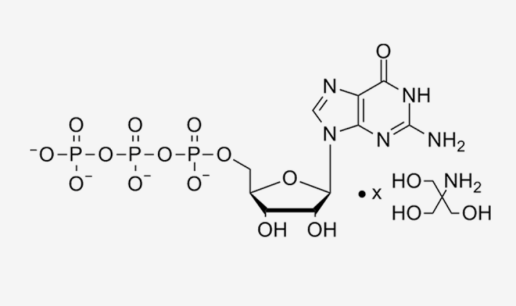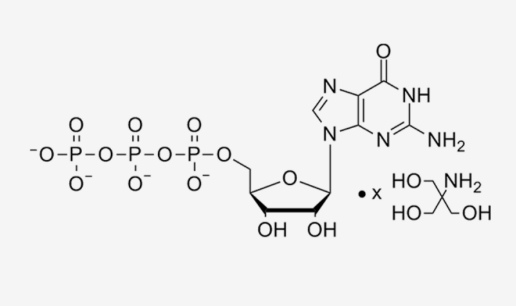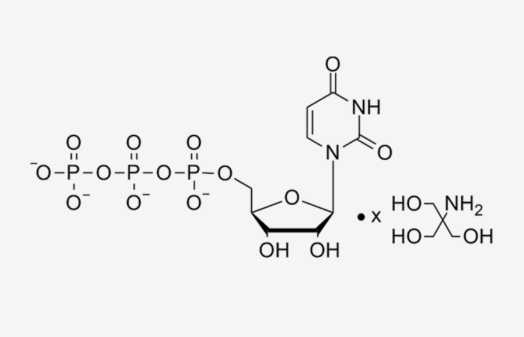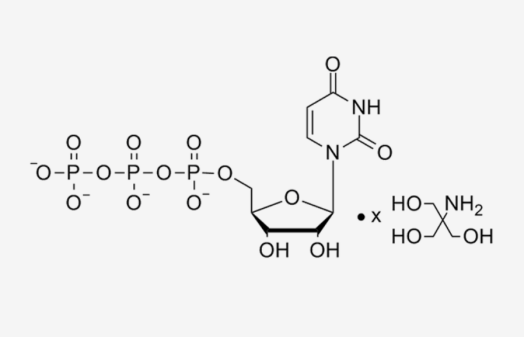无机焦磷酸酶GMP级|Pyrophosphatase,Inorganic GMP-grade
产品说明书
FAQ
COA
已发表文献
Pyrophosphatase, Inorganic GMP-grade (1 U/μL) is an inorganic pyrophosphatase derived from recombinant expression in E. coli. It is an enzyme that can catalyze the conversion of one molecule of pyrophosphate into two molecules of phosphate ions. This is a high-energy reaction, so this reaction can be coupled to some thermodynamically unfavorable transformations in order to drive these transformations to completion. Inorganic pyrophosphatase (PPase) catalyzes the hydrolysis of inorganic pyrophosphate to orthophosphate. In molecular biology, it can be used to increase RNA yield in reverse transcription reaction.
This product is produced in accordance with GMP process requirements, and the product is provided in liquid form
Product Properties
|
Source |
Recombinant E.coli with Pyrophosphatase gene from yeast |
|
Optimum Temperature |
25℃ |
|
Storage Buffer |
50 mM Tris-HCl pH 7.9, 100 mM NaCl, 10 mM DTT, 1 mM EDTA, 0.1% (v/v)TritonX-100, 50%(v/v)glycerin |
|
Unit Definition |
One unit (U) is the amount of enzyme needed to catalyze the hydrolysis of PPI per minute to produce 1 μmol Pi.(The standard reaction is: 500 μL system contains 100 mM Tris-HCl pH7.2, 2 mM MgCl2, 2 mM Ppi; reaction at 25℃ for 10 min) |
Contents
|
Catalog No. |
Name |
Catalog No./Specification |
|||
|
10620ES10 (10 U) |
10620ES60 (100 U) |
10620ES80 (1,000 U) |
10620ES99 (40 KU) |
||
|
10620 |
Pyrophosphatase, Inorganic GMP-grade (1 U/μL) |
10 μL |
100 μL |
1 mL |
40 mL |
Shipping and Storage
The Pyrophosphatase, Inorganic GMP-grade products shipped with dry ice and can be stored at -15℃ ~ -25℃ for one year.
Notes
1. This product is active in a variety of reaction buffers. Usually, this product can be directly connected in experiments such as IVT.
2.The optimal reaction temperature of this product is 25℃, it is active at 16-37℃, 65℃ can inactivate the enzyme for 10 minutes.
3. For your safety and health, please wear personal protective equipment (PPE), such as laboratory coats and disposable gloves, when operating with this.
HB220701
Pyrophosphatase, Inorganic GMP-grade (1 U/μL) is an inorganic pyrophosphatase derived from recombinant expression in E. coli. It is an enzyme that can catalyze the conversion of one molecule of pyrophosphate into two molecules of phosphate ions. This is a high-energy reaction, so this reaction can be coupled to some thermodynamically unfavorable transformations in order to drive these transformations to completion. Inorganic pyrophosphatase (PPase) catalyzes the hydrolysis of inorganic pyrophosphate to orthophosphate. In molecular biology, it can be used to increase RNA yield in reverse transcription reaction.
This product is produced in accordance with GMP process requirements, and the product is provided in liquid form
Product Properties
|
Source |
Recombinant E.coli with Pyrophosphatase gene from yeast |
|
Optimum Temperature |
25℃ |
|
Storage Buffer |
50 mM Tris-HCl pH 7.9, 100 mM NaCl, 10 mM DTT, 1 mM EDTA, 0.1% (v/v)TritonX-100, 50%(v/v)glycerin |
|
Unit Definition |
One unit (U) is the amount of enzyme needed to catalyze the hydrolysis of PPI per minute to produce 1 μmol Pi.(The standard reaction is: 500 μL system contains 100 mM Tris-HCl pH7.2, 2 mM MgCl2, 2 mM Ppi; reaction at 25℃ for 10 min) |
Contents
|
Catalog No. |
Name |
Catalog No./Specification |
|||
|
10620ES10 (10 U) |
10620ES60 (100 U) |
10620ES80 (1,000 U) |
10620ES99 (40 KU) |
||
|
10620 |
Pyrophosphatase, Inorganic GMP-grade (1 U/μL) |
10 μL |
100 μL |
1 mL |
40 mL |
Shipping and Storage
The Pyrophosphatase, Inorganic GMP-grade products shipped with dry ice and can be stored at -15℃ ~ -25℃ for one year.
Notes
1. This product is active in a variety of reaction buffers. Usually, this product can be directly connected in experiments such as IVT.
2.The optimal reaction temperature of this product is 25℃, it is active at 16-37℃, 65℃ can inactivate the enzyme for 10 minutes.
3. For your safety and health, please wear personal protective equipment (PPE), such as laboratory coats and disposable gloves, when operating with this.
HB220701

暂无内容
[1] Li Q, You J, Qiao T, Zhong DB, Yu X. Sodium chloride stimulates the biomass and astaxanthin production by Haematococcus pluvialis via a two-stage cultivation strategy. Bioresour Technol. 2022;344(Pt A):126214. doi:10.1016/j.biortech.2021.126214(IF:9.642)
[2] Ma Y, Cheng B, Li Y, et al. Protective Effect of Nanoselenium on Renal Oxidative Damage Induced by Mercury in Laying Hens. Biol Trace Elem Res. 2022;200(8):3785-3797. doi:10.1007/s12011-021-02956-z(IF:3.738)






